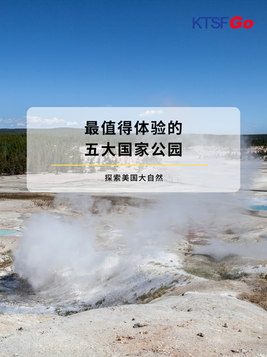2025 Ultimate U.S. Study Abroad Packing Guide: Essentials, TSA Rules & Pro Tips for International Students
- xyang960
- Aug 16
- 3 min read

1. Study Abroad Packing - Critical Documents (Carry-On Only)
Tip: Use a waterproof file folder and carry both physical and digital copies. Never check these in your luggage.
Passport (valid ≥ 6 months) – Required for entry and all official procedures.
U.S. Visa Page – Usually attached inside your passport.
I-20 or DS-2019 Form – Bring originals and copies. Needed for school registration.
Offer Letter / Admission Letter – Sometimes needed for banking or enrollment.
Academic Transcripts & Degree Certificates – Preferably translated into English.
Vaccination Records & Medical Exam Certificate – Some schools check these upon arrival.
Health Insurance Proof – Must include coverage details and validity.
Flight Itinerary – Keep both printed and digital copies.
Accommodation Confirmation – May be asked at immigration.
Emergency Contacts List – Include school, dorm, and home contacts.
Digital Backups – Store key files in the cloud and on a USB drive.
2. Finance & Payment Essentials
USD Cash ($100–$200) – For initial transportation and food; split across bags.
International Credit/Debit Cards – Bring at least two from different banks.
Bank Account Details – Useful for international wire transfers.
Scholarship/Aid Documentation – Proof for school or financial aid offices.
Tuition Payment Receipts – Confirmed proof of school fee payments.
3. Clothing Checklist (Climate & Occasion-Based)
Tip: Only pack basics. Buy more after arrival to avoid excess baggage fees.
Everyday Wear
8–10 shirts (short & long sleeves)
5–7 pants (jeans, casual, sportswear)
Underwear & socks (2 weeks’ worth)
2–3 sleepwear sets
Outerwear (by region)
North: Down jacket, thick coat, gloves, scarf, beanie
South: Rain jacket, light coat
Specialty Clothing
1–2 formal outfits (interviews, parties)
2–3 athletic outfits
1–2 swimsuits
Footwear
Everyday shoes
Sneakers
Dorm slippers
4. Electronics (Important Phone Notice Included)
Laptop + Charger – Required for studies; consider buying locally for warranty coverage.
Unlocked Smartphone – Important: All iPhones sold in the U.S. use eSIM only (no physical SIM). If your phone uses a physical SIM, bring two phones or buy an eSIM-compatible unlocked phone.
Tablet / E-Reader – For reading and classwork.
External Hard Drive / USB Stick – Backup storage for files and photos.
Universal Plug Adapter + Power Strip – U.S. uses 120V with flat-pin plugs.
Headphones / Noise-Canceling Earbuds – For study or entertainment.
Power Bank – Must meet airline restrictions for size (typically ≤100Wh).
5. Study Supplies
Notebooks, pens, highlighters, sticky notes
Document folders & clear file organizers
English dictionary or translator app/device (optional)
Printed course schedule & academic calendar
6. Dorm & Daily Living Items
Bedding
1 set of Twin XL sheets
1–2 pillowcases
1–2 towels & bath towels
Toiletries (Travel-Sized)
Toothbrush, toothpaste, shampoo, body wash, facial cleanser
Razor, comb, skincare products
Feminine hygiene items (initial supply)
7. Medication Rules (Very Important!)
U.S. customs is strict about medications—follow these rules carefully:
OTC Medications: Buy them locally in the U.S. to avoid issues.
Prescription Medications:
Bring an English prescription and a doctor’s note.
Pack in original containers with your name and dosage clearly labeled.
Limit: 90-day supply only. Declare at customs.
Prohibited Items: Do NOT bring any sedatives, controlled substances, or unapproved herbal medicine. Penalties may include fines or detention.
Tip: For long-term meds, consider seeing a U.S. doctor after arrival or shipping with proper documentation.
8. Personal Items
Photos or keepsakes from home
Lightweight snacks or dietary-specific items
Favorite books or an offline music player
9. U.S. Customs & Entry Regulations
Category | What You Need to Know |
Agricultural Items | Do NOT bring fruits, vegetables, meat, or seeds. |
Currency | Declare if carrying over $10,000 USD. |
Baggage Inspection | Declare all food and medication as required. |
Prohibited Items | Weapons, explosives, restricted traditional medicines. |
10. Luggage & Airline Baggage Rules
Most international airlines allow 2 free checked bags:
Max 23kg (50lbs) per bag
Combined dimensions ≤ 158cm (62 inches)
Extra charges apply for overweight or extra baggage.
Leave 20% space for souvenirs or extra supplies before returning home.
11. Final Pre-Departure Checklist
✅ All documents ready with digital backups
✅ Cash & cards split across bags
✅ Weather-appropriate clothing only
✅ Electronics packed and tested
✅ Medications legal and documented
✅ Luggage within airline limits
✅ Reviewed U.S. customs restricted item list
Make Your First Step Count
This checklist covers every essential you’ll need for studying in the U.S. in 2025—from airport to dorm room, and classroom to new adventures. Review this study abroad packing list a week before departure and double-check TSA and U.S. customs regulations before your flight. With smart, compliant packing, you’ll enter this new chapter confident, prepared, and ready to thrive.

















Comments